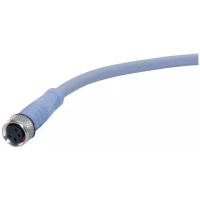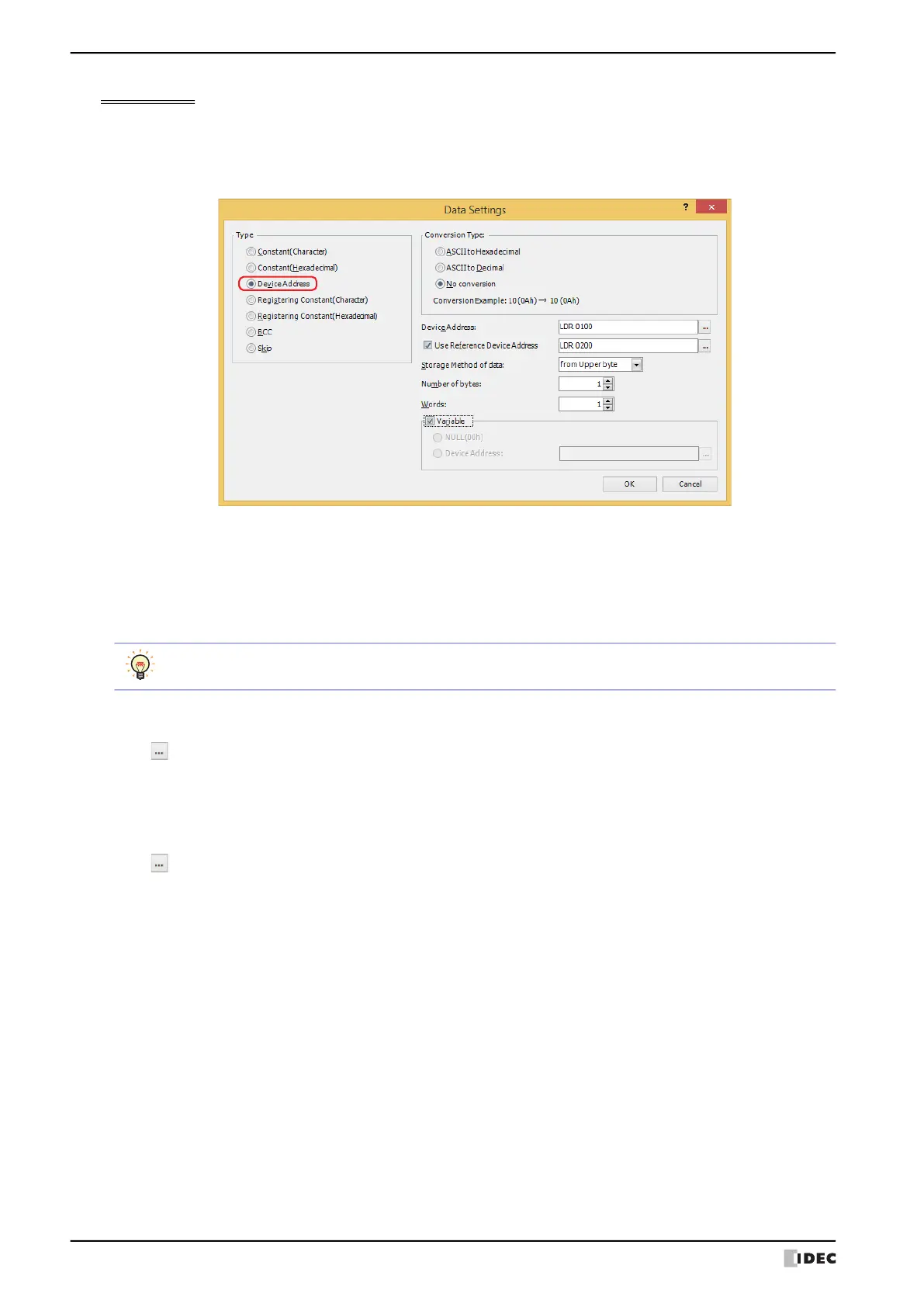5 User Communication
3-64 WindO/I-NV4 User’s Manual
Device Address
From the received data, data of the specified size is unconverted, or converted to binary format, and stored in the
device.
This can be configured only when RXD is selected as Type on the Command Settings dialog box, and Device
Address is selected under Type on the Data Settings dialog box.
■ Conversion Type
Select conversion processing for the received data from the following.
■ Device Address
Specify the word device for storing the received data. You can only specify an internal device.
Click to display the Tag Editor. For the device address configuration procedure, refer to Chapter 2 “5.1 Device
Address Settings” on page 2-70.
■ Use Reference Device Address
To change the word device for storing the received data according to values of device addresses, select this check box
and specify a device address. You can only specify an internal device.
Click to display the Tag Editor. For the device address configuration procedure, refer to Chapter 2 “5.1 Device
Address Settings” on page 2-70.
■ Storage Method of data
Select the handling method for received data. This can be configured only when No conversion is selected under
Conversion Type.
■ Number of bytes
Specify the received data size to be stored per word. The number of bytes to be specified varies based on
Conversion Type.
■ Words
Specify the number of word devices (1 to 250) for storing the received data.
ASCII to Hexadecimal: Considers the received data as a hexadecimal number and converts it to binary data.
ASCII to Decimal: Considers the received data as a decimal number and converts it to binary data.
No conversion: No conversion is performed.
Displays the example of the selected Conversion Type.
from Upper byte: Values of device addresses are stored from the upper byte.
from Lower byte: Values of device addresses are stored from the lower byte.
ASCII to Hexadecimal: 1 to 4
ASCII to Decimal: 1 to 5
No conversion: 1 to 2

